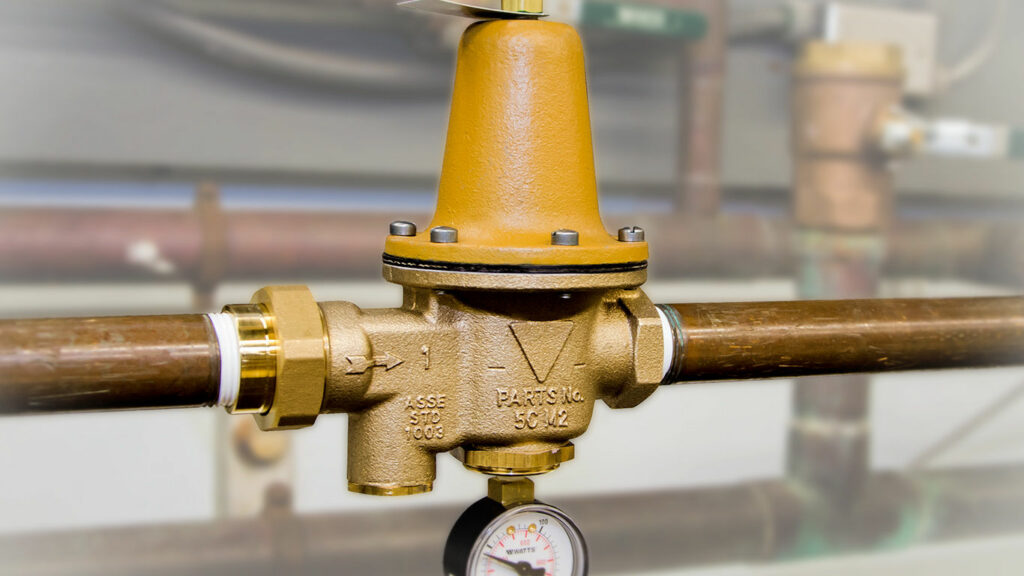In this post, we will take a closer look at How to Install a Water Pressure Reducing Valve (Costs and Maintenance in 2023). To begin, I want to explain a little bit about the function of these devices and equipment, as well as the underlying hydraulic principles.
You can find all the relevant information you’re searching for about pressure reducing valves at Linquip’s website. You can always count on our experts to assist you in finding the pressure reducing valves that are right for you. If you would like to gain a basic understanding of how these industrial devices function, you may find our article, “Regulating & Pressure Reducing Valve: Working Principle & Function,” on Linquip’s website very beneficial.
Do you have any experience with pressure reducing valves? Find the pressure reducing valve you need with Linquip’s selection of Pressure Reducing Valve Products. Does your pressure reducing valve require any special service? Did you ever need a guide for installing or repairing a pressure reducing valve? Do you know where you can obtain a manual for the pressure reducing valve online? The Linquip platform gives free access to all Pressure Reducing Valve Service Providers. You can easily find pressure reducing valve prices on the Linquip platform for free by submitting a request/inquiry to all Pressure Reducing Valve Suppliers and Companies.
Water Pressure Reducing Valve
The water pressure reducing valve, also known as a pressure regulator, is a compact and inexpensive valve that has two functions:
The first is that they automatically decrease the high incoming water pressure from the city mains so that a lower, more functional pressure is available for distribution throughout the building.
Also, they maintain a certain pressure inside the house, usually 50 lbs. By doing so, the household piping and appliances will operate at a safe, moderate, but acceptable pressure.
Whenever a fixture in a home is opened, and water flows from it, it means that the water has been “pushed.” Pressure is what causes this to happen. The amount of pressure or “push” present in the system at that moment determines how fast water flows from the opened outlet. Shortly, the greater the pressure, the greater the force behind the water.
The use of high water pressure, defined as anything above 60 lbs., has some advantages, especially in firefighting systems. When water is present in the home plumbing system, it can cause damage because it erodes or wears away many materials.
In the event that a lot of pressure is applied to the home plumbing system, water heaters leak, water pipes bang, faucets drip, dishwashers and clothes washers break down, or pipes leak. If the water flow rate exceeds that necessary to meet the demands of normal fixtures or appliances, it becomes damaging, wasteful, and shortens the life of all of the equipment in the system. The most critical impact on the average homeowner is that it can raise water, energy, and sewer bills.
To know more details about pressure reducing valves, click here.
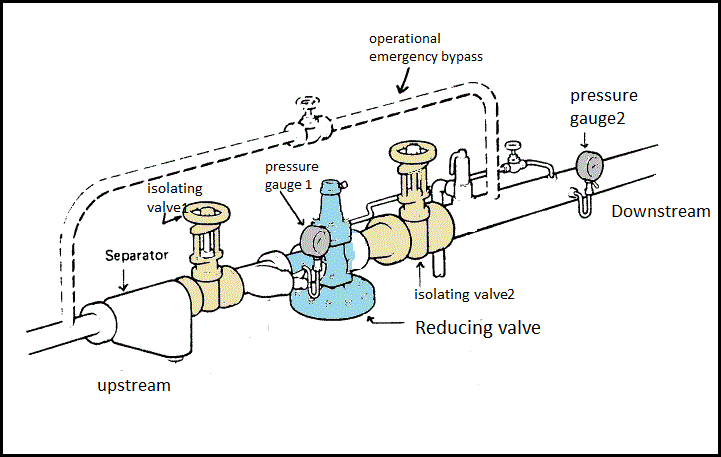
Water Pressure Reducing Valve: How Much Does It Cost?
There are different types of water pressure reducing valves and varying costs for installation. To get an estimate, contact a qualified plumbing contractor in your area.
The price of pressure reducing valves starts at around $50. You can expect to pay around $350 for a professional plumber to install a new pressure reducing valve. Homeowners who prefer getting their hands dirty and installing things themselves can purchase one and install it themselves. The process is rather involved, and you may need to cut a piece of your main water line and solder on the valve to do it.
In order to save you time, we offer a summary of the total amount of money that will be required to install a water pressure reducing valve. Using this cost guide, you can determine what each project component will cost, so you can choose an appropriate budget and achieve your project objectives.
| Item | Cost |
| Pressure valve cost | $85 to $103 |
| Pressure regulator valve installation labor, basic | $264 to $406 |
| Pressure regulator valve installation tools and equipment | $43 to $51 |
| The total cost of installing pressure regulator valve | $464 to $554 |
| Average cost per valve | $464to $554 |
Tips and General Information about Pressure Regulator Valve Installation Costs
Estimates are for basic jobs that are performed in acceptable conditions by trade professionals using mid-range materials. If you use master craftsmen, premium materials, and project supervision, your costs will be higher if you are not mentioned on this page.
Please note that these estimates do not constitute an estimate from a licensed professional. For accurate estimates of work required and costs for your project, Linquip recommends consulting with reputable professionals before making any final decisions.
- The estimates include the following:
- Delivery of local materials and equipment and transportation of service providers to and from the job site.
- The cost of preparing the worksite for the installation of Pressure Regulator Valves, including costs to protect existing structures, finishes, materials, and components.
- Typical setup and mobilization fees, as well as the minimum hourly charge for small Pressure Regulator Valve Installation projects.
Cost estimates exclude the following items:
- Amounts related to the removal, relocation, repair, or modification of existing framing, surfacing, HVAC, electrical, and plumbing systems – or the cost of bringing them into compliance with local building codes.
- Costs associated with testing and remediation of hazardous materials, such as asbestos, lead, etc.
- Overhead and markup for managing and supervising the installation of the Pressure Regulator Valve by General Contractors. If this project is going to be supervised by a general contractor, add 13% to 22% to the total cost above.
- Material and supply sales tax.
- Inspection or permit fees (or a portion thereof) charged by your local building department.
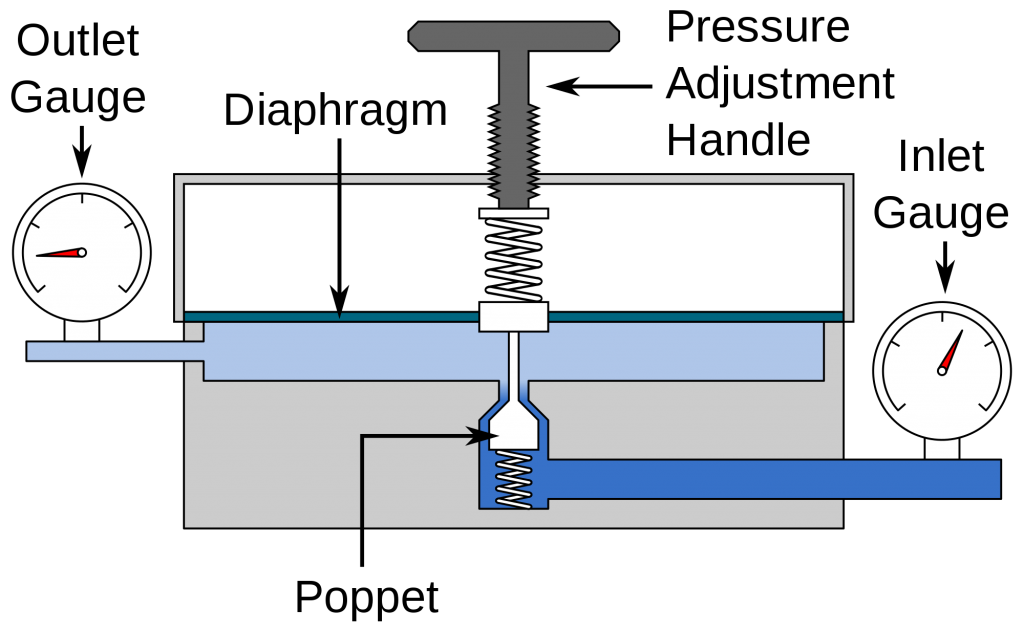
Water Pressure Regulator Replacement Cost
Changing a worn or failing regulator is often a simple swap-out procedure, particularly if you are using a model from the same manufacturer and size.
Although the plumber will still have to measure the pressure and replace the component, most of the necessary plumbing will already be installed. Depending on what kind of regulator you choose, you can expect to pay between $150 and $250.
The Types and Costs of Water Pressure Regulators
Water pressure regulators are relatively straightforward devices, and the most important factor that affects the price is the material used. In the lower price range, aluminum or synthetic valves are less robust but less expensive. Brass or bronze valves are more expensive, but they can handle higher pressures and will last longer before they need to be replaced. As is the case with most plumbing devices, cheap devices can present a false economy.
While some pressure regulator valves also come with in-built water pressure gauges, it will increase the price, but it will make future pressure testing, monitoring, and maintenance easier.
How Much Savings Can I Expect from Installing a Water Pressure Reducing Valve?
You could save $50 to $150 a year on average, and probably much more. If you consider that 1/3 less water flows at 50 lbs than 100 lbs., you may be able to save about 1/3 of the water formerly consumed. As a typical family of four uses 90,000 gallons per year, that would mean a savings of approximately 30,000 gallons of water. As pressure increases, the savings increase as well. At lower pressures, the savings are less. Find out the rate from your water provider.
Keep in mind, too, that 1/3 of the 30,000 gallons of water saved will be heated. Therefore, dividing 1/3 of the 30,000 gallons by 2 to reflect the cold water mixing factor will result in a savings of 5,000 gallons of hot water per year.
With 4 cents to heat a gallon, you can figure on a $200 savings. Additionally, you can expect to save on your sewer surcharge bill because the 30,000 gallons of water you save won’t be going into the wastewater system, so you won’t have to pay for it. Assessing charges should be obtained from your local authority. As an added benefit, you would also be able to figure out the savings resulting from less frequent appliance repair or replacement. Regardless of the exact figure, based on your experience in the past, you could expect less frequent maintenance, as well as better performance from these appliances.
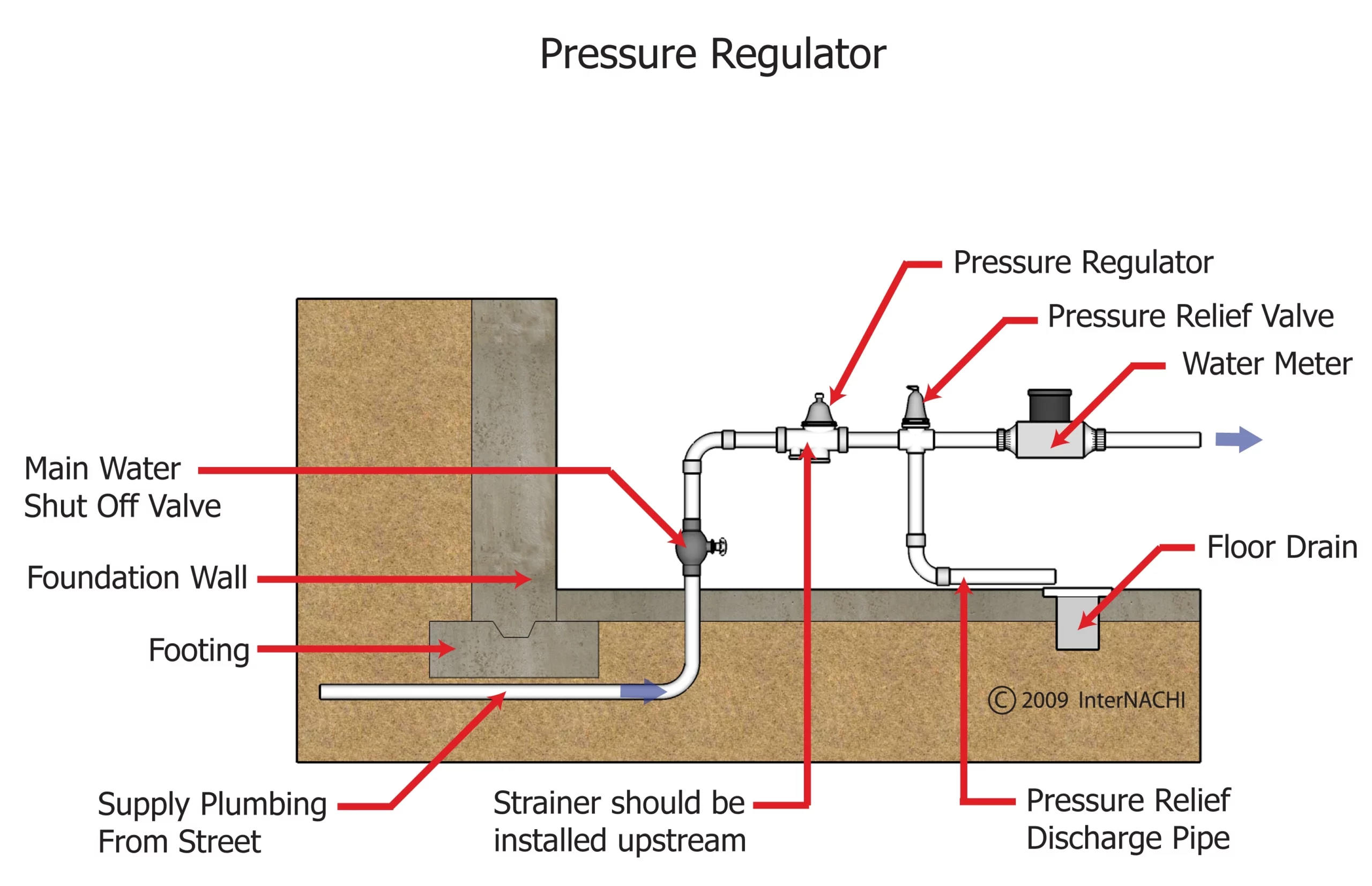
Water Pressure Reducing Valve Installation Steps
Steps to install a water pressure valve include:
- Install a pressure gauge on the valve of a hose sillcock or another valve with a male threaded connection to determine the incoming water pressure.
- Ideally, water pressure in a house should be 50 pounds per square inch (PSI). Install a pressure-reducing valve if the pressure is excessive.
- Place a pressure gauge on either side of a pressure-reducing valve using threaded pipe and fittings.
- Mark where to cut the water pipe by holding the valve assembly against the water pipe.
- Drain the plumbing system after turning off the water in the house.
- After you mark a section of water pipe before, remove it with a tubing cutter.
- Take the pressure gauges and rubber O-rings out of the valve assembly.
- Put flux on the ends of the water pipe and the valve assembly.
- Join the assembly to the copper pipe with solder.
- After the assembly has cooled, replace the pressure gauges and O-rings.
- The water should be turned back on, and the pressure gauge should be read on the outgoing side of the valve.
- Water pressure above 50 PSI should be adjusted by turning counterclockwise the adjusting screw on the valve.
- You can raise the water pressure by turning the adjusting screw clockwise when the water pressure is too low.
Water Pressure Reducing Valve Maintenance
According to national standards and manufacturer’s instructions, the pressure reducing valves should be checked and serviced.
Inspection Frequency
Technical standards specify system-level measures that should be considered during design to facilitate accessibility to appliances and maintenance operations. A frequency schedule is provided for inspecting and maintaining various components of a potable water system. A pressure reducing valve needs to be maintained and inspected once a year at the very least.
The frequency of inspections and maintenance methods will vary according to the location and country.
Maintenance Operations
Cleaning, inspecting, and replacing the entire cartridge requires the following steps:
- Switch off the pressure reducing valve, and remove the cartridge;
- Ensure the strainer is clean, and check the functionality of the cartridge;
- Reassemble everything and perform a test run.
Conventional Cartridge
During regular maintenance, the internal cartridge of a pressure reducing valve can be removed for cleaning. Make sure that the individual parts that are being pulled out are not damaged.
Self-Contained Cartridge
A preassembled cartridge with the diaphragm, strainer, seat, obturator, and compensation piston comes with a cover that can be removed to facilitate inspections.
Protecting the pressure reducing valve always requires a strainer. The most common configurations are as follows:
- An upstream serviceable strainer
- A strainer integrated into the cartridge
- A serviceable strainer integrated into the cartridge
Whenever a high impurity content is present, it is recommended that a strainer be installed upstream of the pressure reduction valve, even if the valve itself has a built-in strainer, to ensure double filtration.
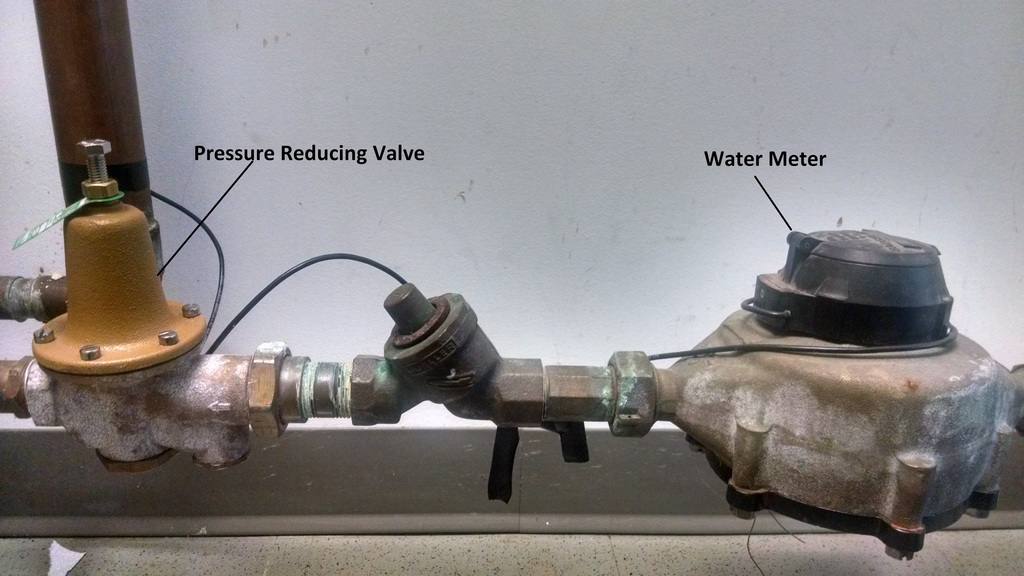
Several pressure reducing valve models are equipped with high-capacity strainers, which are housed in transparent containers. Consequently, the pressure reducing valve is a compact unit that is protected from impurities that could cause it to malfunction. Strainers must be subjected to periodic maintenance, be installed in a readily accessible location, and permit easy cleaning and replacement.
Is it necessary to install a pressure reducing valve?
Definitely, a pressure reducing valve helps prevent damage to pipes, fixtures, and appliances in high-pressure areas such as Draper, which receives its water from mountains. Saving money can be achieved by reducing water wastage in your home with pressure reducing valves.
What Is the Best Place To Locate a Pressure Reducing Valve?
Water pressure regulators are typically located after the main shut-off valve and where the main water line enters the house. In this way, if you need to work on or replace the pressure regulator, you can simply shut off the water main.
Download How to Install a Water Pressure Reducing Valve PDF
The link provided below allows you to download this article as a PDF document.
Buy Equipment or Ask for a Service
By using Linquip RFQ Service, you can expect to receive quotations from various suppliers across multiple industries and regions.
Click Here to Request a Quotation From Suppliers and Service Providers
Read More In Linquip
- Pressure Reducing & Regulating Valve: Working Principle & Function
- Best Pressure Reducing Valves
- Solenoid Valve Installation Costs: Main Factors + PDF
- Air Release Valve Installation Costs (Ultimate Guide) + PDF
- Ball Valve Installation Costs & Repair (Ultimate Guide)
- Angle Valve Installation Costs: Practical Factors
- Globe Valve Installation Costs (Clear Guide) + PDF
- Gate Valve Installation Costs and Maintenance (Clear Guide)
- 10 Types of Water Valves: The Ultimate Guide

